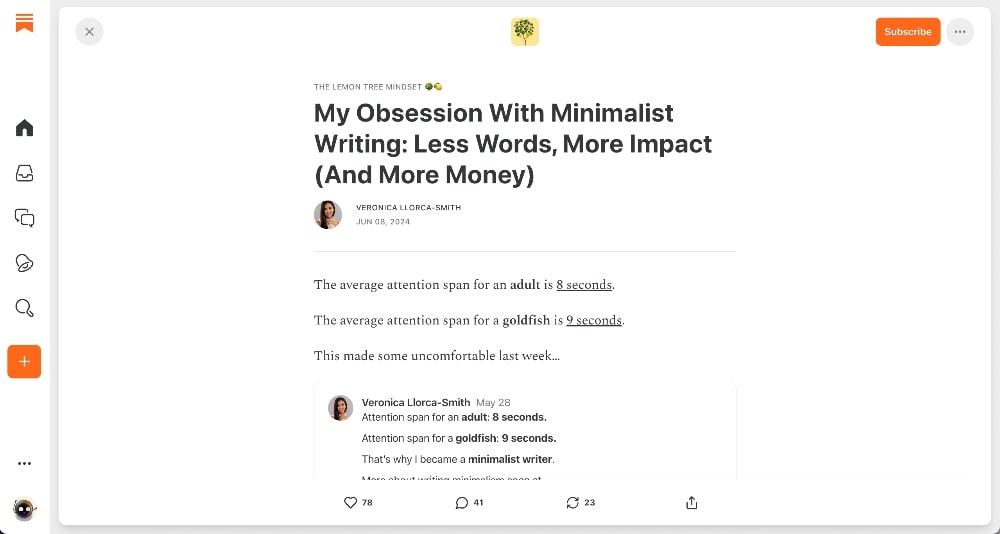If you’re looking to take your content and community to the next level, you’ve probably heard of Substack.
This rapidly growing platform has taken the online publishing world by storm, allowing writers and creators to easily build a following and monetize their work through paid newsletters.
But what is Substack and how can you leverage it to grow your own business?
In this comprehensive guide, we’ll dive deep into the world of Substack and share proven strategies for building a thriving newsletter that engages your audience and drives real results.
By the end of this article, you’ll have a crystal clear understanding of how Substack works, from setting up your publication to writing content and monetizing your efforts. We’ll cover essential design fundamentals, content creation best practices, and powerful growth hacks that the most successful Substack creators are using right now.
Substack offers an incredible opportunity to build a profitable business around your ideas.
What is Substack?
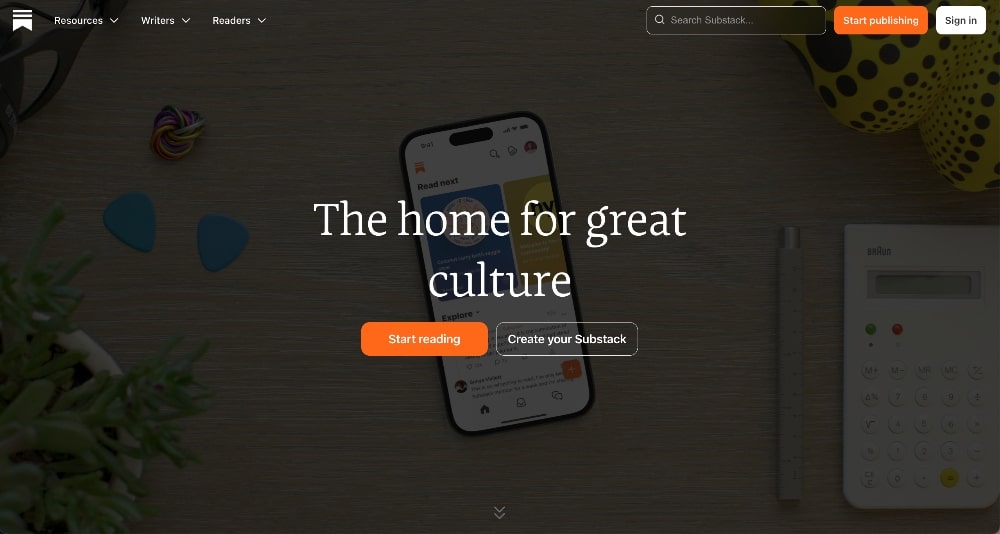
Substack is an online platform that allows writers, journalists, authors, and other content creators to start their own subscription-based newsletter. It provides an all-in-one solution for publishing, distributing, and monetizing email newsletters and other written content.
Substack was founded in 2017 by Chris Best, Jairaj Sethi, and Hamish McKenzie.
At its core, Substack facilitates three key things:
- Publishing: Writers can easily create and publish newsletters, blogs, or other written content through Substack’s user-friendly web interface or using their email client.
- Distribution: Once published, the content is delivered directly to subscribers’ inboxes as email newsletters. Substack handles all email delivery and management.
- Monetization: Writers can offer paid subscription tiers with different pricing levels and benefits. Substack handles all payment processing and takes a 10% cut of subscription revenue.
The platform’s simplicity, direct reader relationship, and built-in monetization capabilities have made it popular among independent writers, journalists, analysts, and subject matter experts looking to build sustainable businesses around their writing.
They currently have over 35 million active subscriptions.
In addition to paid subscriptions, Substack also supports free email signups and individual paid post/edition purchases.
How Substack Differs from Traditional Blogging Platforms
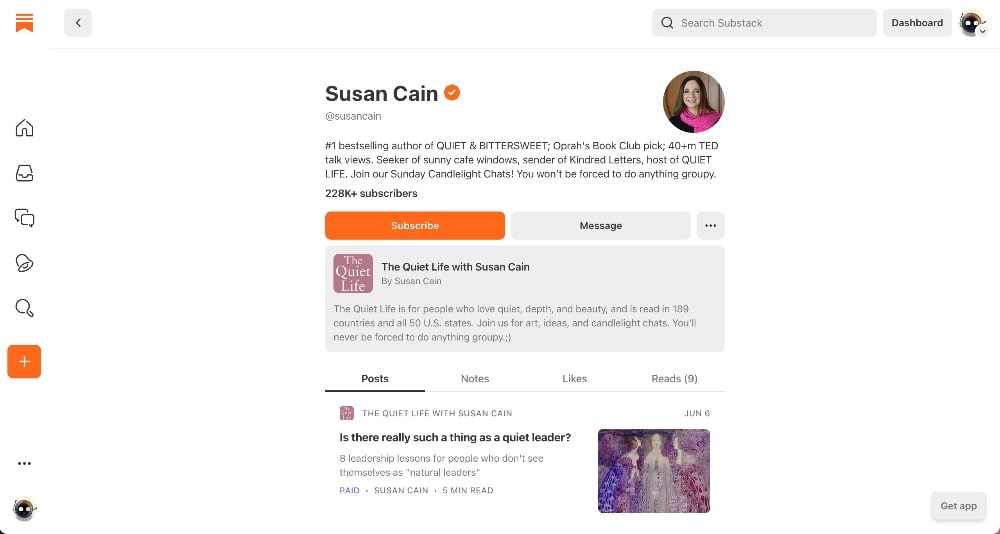
Substack can be a great asset for bloggers and writers, but it also differs from traditional blogging platforms in a few ways.
- Subscription vs. Ad-Supported: Rather than ad revenue models, Substack facilitates direct payment from readers through recurring paid subscriptions.
- Email-Centric vs. Web Publishing: Content is delivered directly to subscribers’ inboxes rather than being web publications that readers visit separately.
- Writer/Creator Focused vs. Platform Owned: Writers control their content, data, and relationships rather than being beholden to platform algorithms and policies.
- Text/Email Newsletters vs Multimedia Blogging: While allowing multimedia, Substack’s focus is more on newsletter-style long-form text content rather than broader multimedia blogging.
- Monetization Structure: Substack takes a straight 10% revenue cut whereas other platforms use advertising networks for monetization.
Substack’s Revenue Model
Substack makes money by taking a 10% cut from any paid newsletter subscription revenue that writers generate on the platform.
Their model is designed to align incentives – Substack only makes money when writers make money from paid subscriptions.

For example, if a writer charges $5 per month for a paid newsletter and has 1,000 subscribers, they would earn $5,000 per month. Substack would then take a 10% cut, or $500, keeping $4,500 for the writer.
The 10% fee covers payment processing, newsletter/email delivery, hosting, and access to Substack’s platform tools and features. Writers get paid automatically each month via methods like Stripe transfers or PayPal.
This revenue split model incentivizes Substack to continually improve the platform to help writers grow their paid subscription numbers.
It puts writers in control of monetizing their work directly with readers rather than relying on ads, sponsors, or other third parties.
Pros and Cons of Substack
Before we get into how Substack works, I want to highlight a few pros and cons that Substack users face.
Pros:
- Easy to Use: Substack is fairly easy to use, and you can transfer a subscriber list that you have built elsewhere.
- Free to Launch: Substack writers don’t pay a dime to use the platform and start a free newsletter, making it an attractive option for creators who want to earn money without upfront costs.
- Direct Access to Audience: You have direct access to your audience because your content goes right to their email inbox.
- High Domain Authority: Substack has a higher domain authority than many new blogs, which can help search engines find your content more easily.
- Discoverability: Substack offers a built-in ecosystem that promotes the discovery of creators and their content, potentially attracting new readers and expanding reach.
- Monetization Options: Substack offers a range of options to make money from your content, including paid subscriptions, which can be a significant source of income.
- Analytics and Insights: Substack provides creators with helpful analytics and insights, including subscriber growth, open rates, engagement metrics, and demographics.
- Discussion Threads: Substack encourages meaningful discussions around your content through its comment threads.
- Community Support: Substack has a strong community of writers who collaborate and support each other, providing opportunities for growth and networking.
Cons:
- Limited Design and Customization: Substack has limited design and customization options, which can be a drawback for authors who value visual appeal.
- High Fees for Paid Subscriptions: Substack takes a 10% cut of subscription revenue + Stripe fees, which can be a significant expense for authors.
- No Ad Monetization: Substack does not offer ad monetization options, which can be a big monetization opportunity for traditional bloggers.
- No Donation or Membership Options: Substack does not offer donation or membership options, which can limit the ways authors can engage with their audience.
- Limited Email Marketing Features: Substack features for email marketing (i.e. segmentation and automation) are very limited compared to other platforms, which can make it difficult to manage large email lists.
- Potential for Content Removal: Substack has the right to remove content without notice, which can be a concern for authors who invest heavily in their work.
- Limited Integration Options: Substack has limited integration options with other tools and platforms, which can limit its functionality.
- Dependence on Substack: You’re going to have to depend on Substack as a platform, and they reserve the right to remove content or delete accounts at any time without notice.
How Substack Works
Now that we’ve covered what is Substack and what it offers, let’s dive into how Substack works.
We’ll walk you through the process step by step, so you can start building your own newsletter in no time!
1. Sign Up and Profile Customization
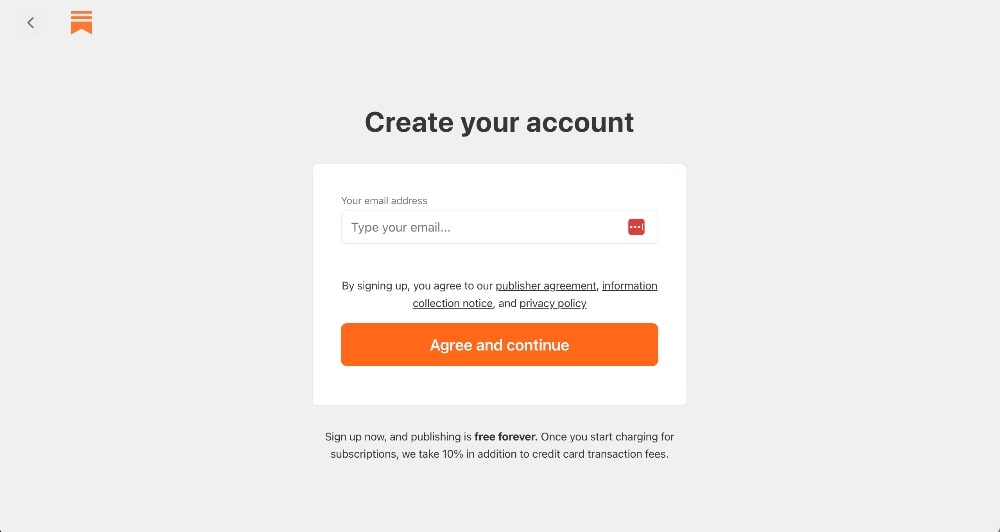
To get started with Substack, you need to sign up for an account and set up your profile. Here’s a step-by-step guide to help you through the process:
- Visit Substack’s Website: Go to Substack’s website and click on the “Sign Up” button.
- Enter Your Information: Fill out the registration form with your email address, password, and other basic information.
- Set Up Your Profile: Once you have verified your email address, you will be taken to your Substack dashboard. Here, you can set up your profile by adding a profile picture, bio, and social media links.
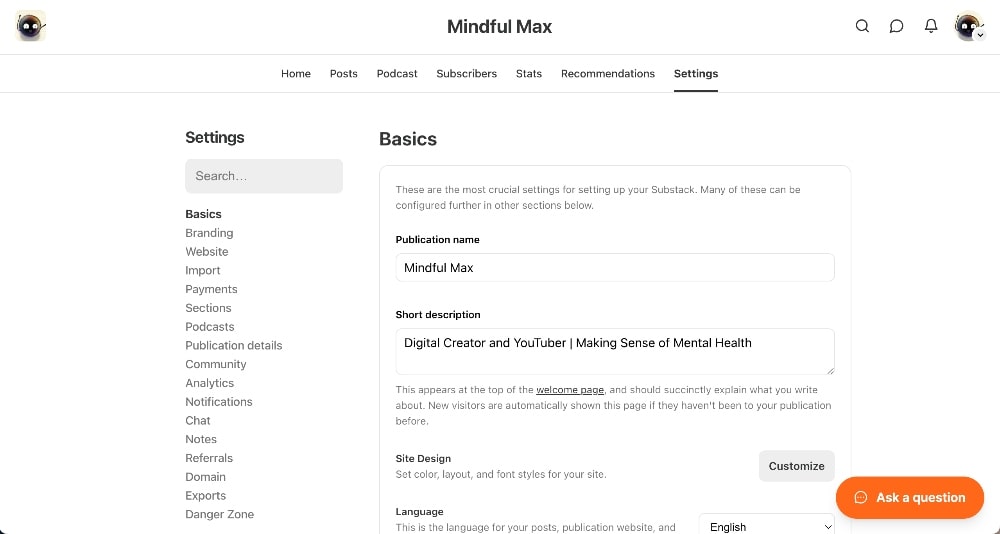
- Import Your Mailing List: If you already have an existing audience, you can import your subscriber list at this stage. Otherwise, you can click the button to skip if you’re just starting out.
- Select Interest Topics: Substack will ask you to select some topics of interest to help recommend existing creators to you.
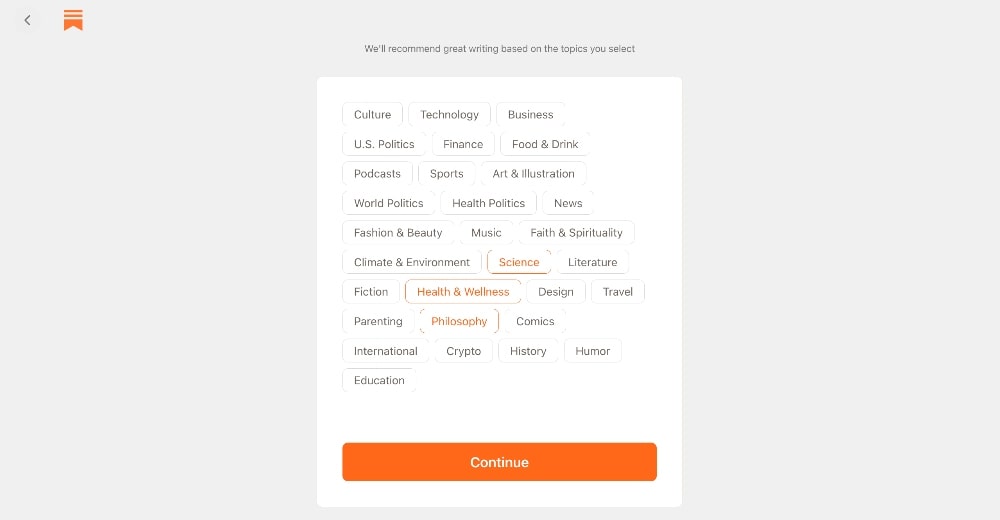
- Choose Your Newsletter Name: Choose a name for your newsletter that reflects your brand and content. This name will be used to identify your newsletter and will appear in your subscribers’ inboxes.
- Set Up Your Newsletter Description: Write a brief description of your newsletter to help subscribers understand what they can expect from your content.
- Set Up Your Newsletter Categories: Choose categories for your newsletter to help subscribers find your content and to help you organize your content.
- About Page: Customize your about page, which is another page that users can read more about you and why they should subscribe to your list.
- Branding: This is where you can change the branding colors and fonts as well as the theme of your Substack posts.
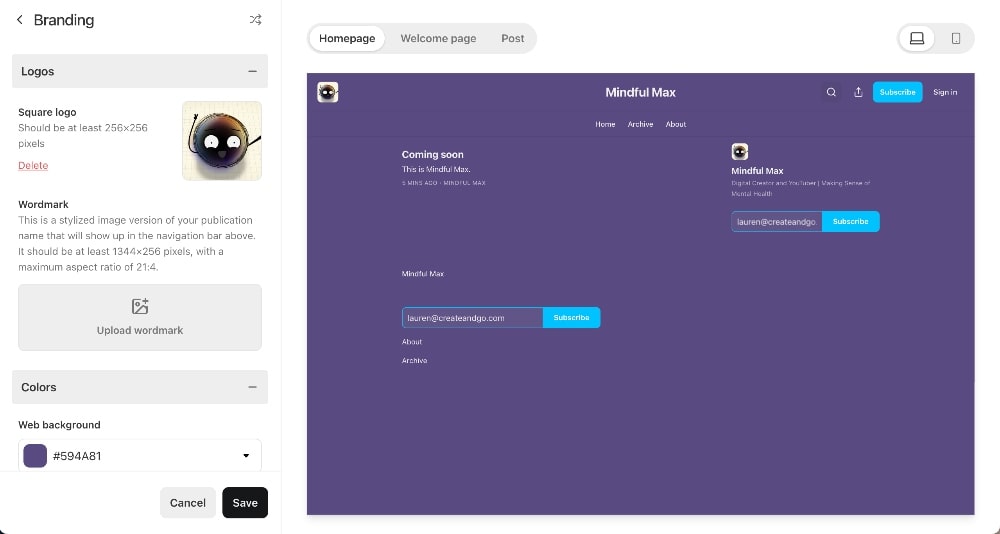
- Subscriptions: It might make sense to start with free subscriptions at first until you’ve built up a consistent subscriber base. Then you can turn those free subscribers into paid subscribers over time.
Once you’ve set up your Substack website, you can start writing your first post.
2. Publish and Send Your First Substack Post
After setting up your Substack profile and customizing your newsletter, it’s time to publish and send your first post.
- Write and Edit: Write and edit your newsletter content using Substack’s built-in editor.
- Schedule or Send: Choose to schedule your newsletter to send at a later time or send it immediately.
- Track Delivery: Use Substack’s analytics to track the delivery of your newsletter and see how your subscribers are engaging with it.
Tips for Publishing Your First Post
- Keep it Simple: Your first post should be simple and easy to understand. Focus on introducing yourself and your content to your subscribers.
- Use a Clear Subject Line: Use a clear and descriptive subject line that accurately reflects the content of your post.
- Use a Compelling Introduction: Use a compelling introduction to grab the attention of your subscribers and draw them into your content.
- Keep it Short: Keep your first post short and concise. Aim for a length of around 500-700 words.
- Use Visuals: Use visuals such as images, videos, or infographics to break up the text and make your post more engaging.
- Encourage Feedback: Encourage feedback from your subscribers by asking questions or requesting their input.
By following these tips, you can create a successful first post that engages your subscribers and sets the tone for your future content.
3. Grow and Monetize Your Subscriber Base
Now that you have a Substack newsletter set up and are creating engaging content, it’s time to think about monetization.
Promote Your Substack
Promote your Substack on your website, social media channels, and other platforms to attract new subscribers.
This can include sharing your content on relevant online communities, participating in online discussions related to your niche, and collaborating with other creators to reach new audiences.
Offer Incentives
Offer incentives such as free content, exclusive access, or discounts to encourage people to subscribe to your Substack.
This can help to build a loyal following and increase engagement with your content.
Collaborate with Other Creators
Collaborate with other creators in your niche to cross-promote your content and reach new audiences.
This can include guest posting on other blogs, participating in podcasts or video series, and engaging with other creators on social media.
Engage with Your Subscribers
Engage with your subscribers by responding to comments, answering questions, and providing value-added content.
This can help to build trust and loyalty with your target audience and increase the likelihood that they will continue to subscribe to your Substack.
Offer Exclusive Content
Offer exclusive content to your paid subscribers to provide additional value and incentivize people to upgrade their subscriptions.
This can include access to exclusive articles, videos, or other content that is only available to paid subscribers.
Paid Subscriptions
The most obvious way to monetize your Substack newsletter is through paid subscriptions. You can set your own pricing and offer different tiers of content and subscription fees to suit your audience’s needs.
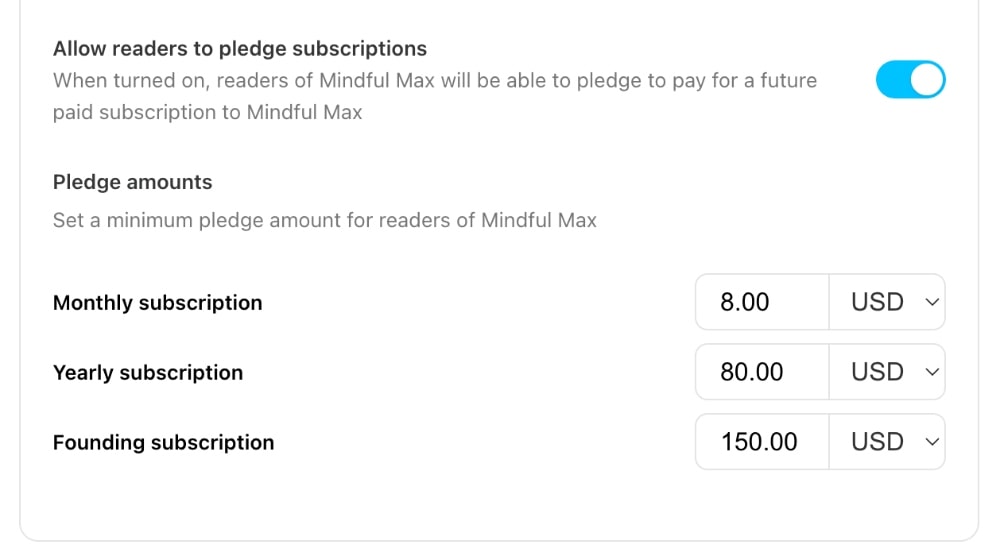
For example, you could offer a basic subscription for $5 per month, a premium subscription for $10 per month, or a VIP subscription for $20 per month.
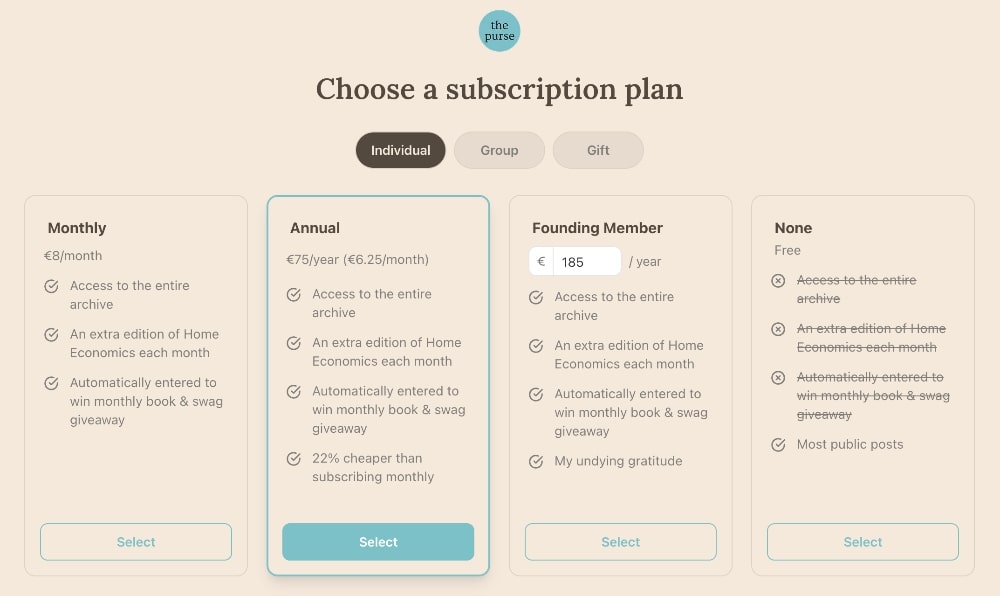
Other Ways to Monetize
There are a few other ways that you can monetize your content that aren’t features within Substack but ways that you can build out your business around your Substack newsletter.
- Sponsorships and Advertising: You can partner with brands that align with your audience’s interests and values, and offer them sponsored content or advertising space in your newsletter.
- Affiliate Marketing: You can promote products or services from other companies and earn a commission on any sales generated through your unique referral link.
- Digital Products: You can also monetize your Substack newsletter by creating and selling digital products, such as ebooks, courses, or software. You can promote these products in your newsletter and offer them to your subscribers at a discounted rate.
- Consulting and Coaching: If you have expertise in a particular area, you can offer consulting or coaching services to your subscribers. You can promote these services in your newsletter and offer them to your subscribers at a discounted rate.
Diversifying your means of making money will help you build a sustainable business around your content.
4. Check Analytics and Track Reader Engagement
Monitoring your Substack’s performance is crucial for understanding how your content is resonating with your audience and making informed decisions about your content strategy.
Substack provides a range of analytics tools to help you track key metrics and gain insights into your reader engagement.
Access Your Analytics Dashboard
To access your Substack analytics, simply log in to your account and navigate to the “Analytics” section.
Here, you’ll find a comprehensive dashboard that displays various metrics related to your newsletter’s performance.
Track Subscriber Growth
One of the most important metrics to track is your subscriber growth over time. Substack provides a graph that shows the number of new subscribers you’ve gained each day, as well as your total subscriber count.
This information can help you identify trends and assess the effectiveness of your subscriber acquisition efforts.
Monitor Open Rates and Click-Through Rates
Open rates and click-through rates are crucial indicators of how engaged your readers are with your content.
Substack tracks these metrics for each newsletter you send, allowing you to see which topics and subject lines resonate most with your audience.
Analyze Reader Engagement
In addition to open and click-through rates, Substack provides insights into how readers are engaging with your content.
You can see which articles are most popular, how much time readers spend on your site, and which links they click on the most.
Identify Top Referrers
Substack also tracks where your readers are coming from, allowing you to identify your top referrers.
This information can help you optimize your content promotion efforts and focus on the channels that are driving the most traffic to your Substack.
Monitor Subscriber Retention
Retaining subscribers is crucial for the long-term success of your Substack. Substack provides data on subscriber retention, showing you how many readers have remained subscribed over time.
This information can help you identify areas for improvement and ensure that you’re providing value to your audience.
Experiment and Iterate
Experiment with different content formats, monetization strategies, and engagement tactics to see what works best for your audience.
This can help to increase engagement and revenue from your Substack.
Stay Consistent
Stay consistent with your content and engagement to build trust and loyalty with your subscribers over time. Substack users want to know that they can count on you for regular content and value.
Remember, tracking your Substack’s performance is an ongoing process.
By regularly monitoring your analytics and making data-driven decisions, you can optimize your content and grow your subscriber base over time.
FAQs About Substack
Conclusion
We’ve covered a ton of ground, from the basics of setting up your publication to crafting engaging content and monetizing your efforts.
I hope you’re feeling inspired and ready to dive in and start building your own Substack community.
Before you go, here are a few final thoughts to keep in mind:
- Start small: Don’t try to do too much at once. Start with a simple newsletter and gradually add more features and content as you get the hang of things.
- Be consistent: Consistency is key to building a loyal audience. Try to publish your newsletter regularly and maintain a consistent tone and style. Your readers will appreciate the reliability!
- Engage with your audience: Don’t just send out your newsletter and forget about it. Engage with your audience by responding to comments, answering questions, and asking for feedback. It’s all about building relationships!
- Keep it simple: Don’t overcomplicate your newsletter with too much content or too many features. Keep it simple and focused on your core message. Your readers will thank you for it.
- Experiment and adapt: Don’t be afraid to try new things and experiment with different formats and content. Be willing to adapt to changes in your audience and the platform. Variety is the spice of life, after all!
Don’t stress about getting everything perfect right away – just focus on creating content you’re passionate about and connecting with your people.
